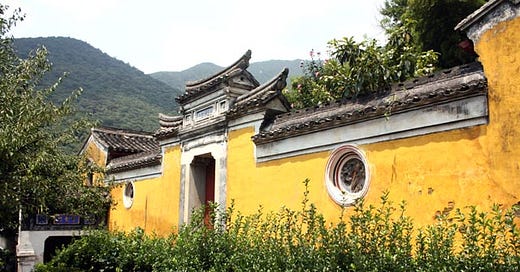Two temples in (or near) the city of Ningbo in Zhejiang Province, in one day? Yes, please! We'll cover the first one in this episode of
TEMPLE TALES!
The ancient city of Ningbo exhibits evidence of a major culture, the Hemudu, dating back to 5500 to 3300 BCE. The city lies on the south side of Hangzhou Bay, across from that more-famous upstart, Shanghai. Today, Ningbo's port is the fourth-busiest in the world (Shanghai is Number One). Ningbo's character as a port city plays a significant role in all three of the temples I visited there. The city was also one of the eastern termini of the Silk Road.
Getting to Tiantong Mountain
The morning after I returned from Putuoshan, the people I was staying with hired a car and driver and took me to two temples. The one we visited in the afternoon was fairly easy to reach, lying as it did on a main highway. We'll visit that one next week.
But the first one was a proper mountain temple situated six or eight miles off the highway, and over 20 miles outside of the city. It would have been tough to reach by public transportation (though there is a rural bus, heaven knows how I would have figured out where to get on it!).




